
| Podocarpus Country |
Getting There |
|
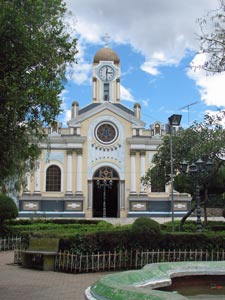 Church and plaza - Vilcabamba |
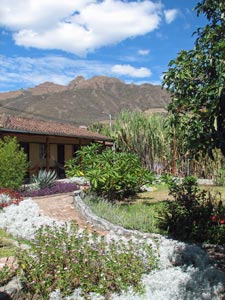 View across the garden of our hostel |
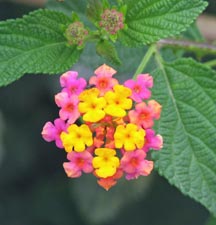 |
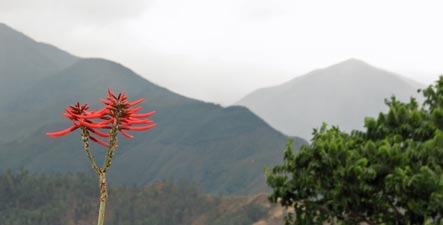 |
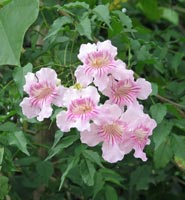 |
| Mandango Peak |
||
|
|
|
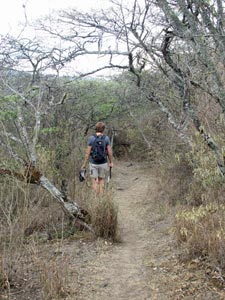 Track through the thirsty vegetation |
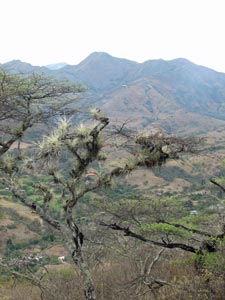 Airplants on the Camino de Mandango |
|
|
||
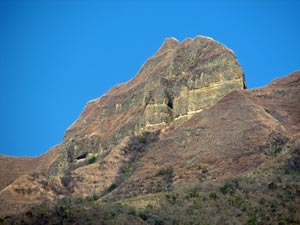 The impressive ramparts of Mandango |
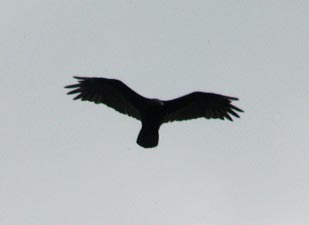 Silhouette of an Andean hawk |
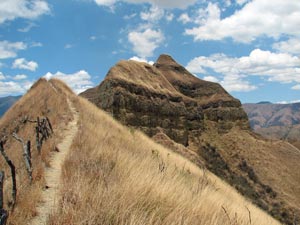 View of Mandango Peak from the north |
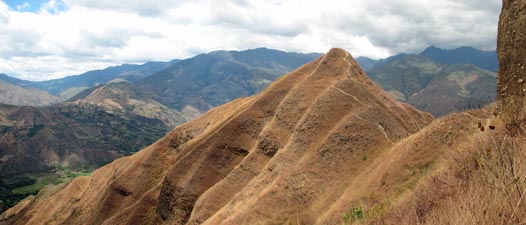 Track along the dry ridge leading up to the face of Mandango |
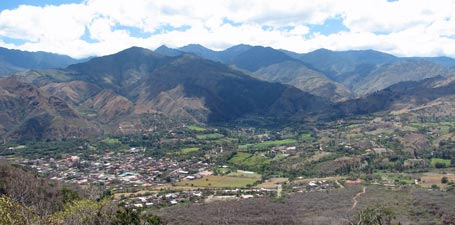 View over the Vilcabamba Valley toward Podocarpus National Park |
|
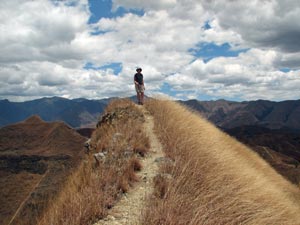 Nello on the crest of Mandango's ridge |
Rumi Wilco Reserve |
|
|
|
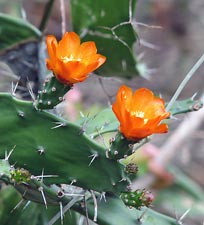 |
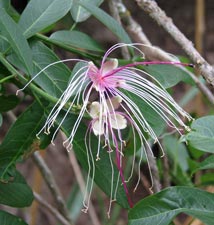 |
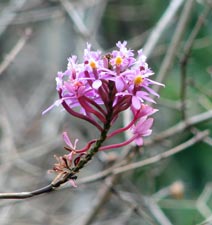 |
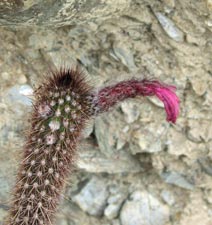 |
An assortment of flowering cacti, herbs, shrubs, orchids and kapok trees |
|||
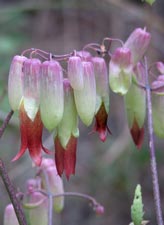 |
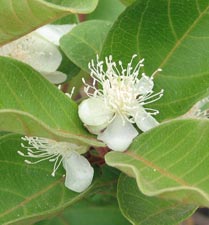 |
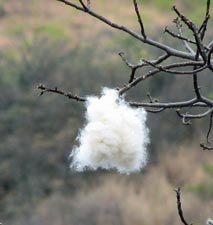 |
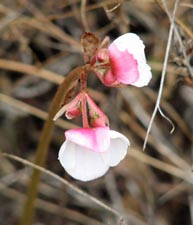 |
|
|
|||
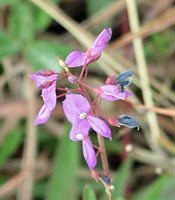 |
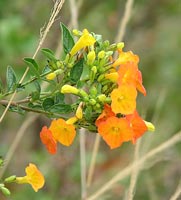 |
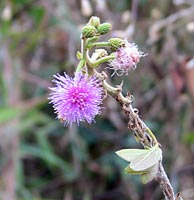 |
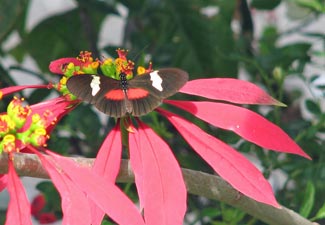 |
|
|||
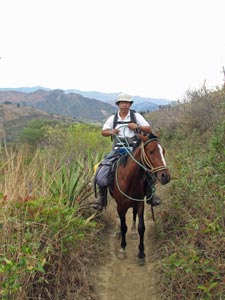 Sergio and Niño |
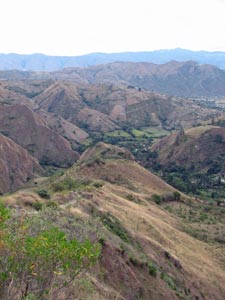 Looking back to the drier cleared ridges |
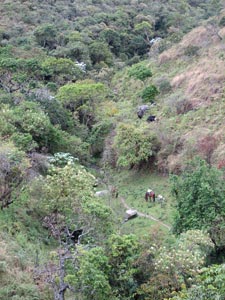 A clearing in the forest |
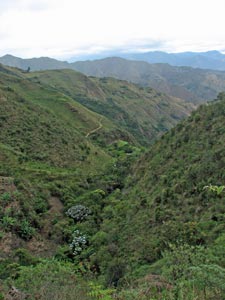 View ahead to the cloud forest |
|
|||
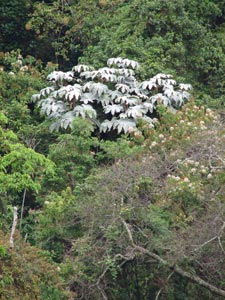 |
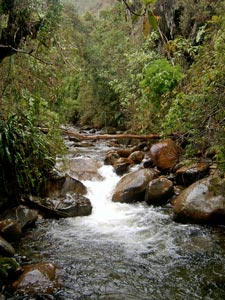 Upper reaches of the Rio Yambala |
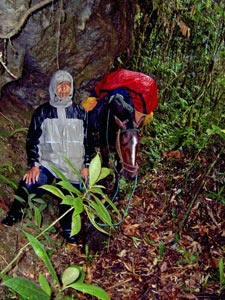 Sheltering from the rain |
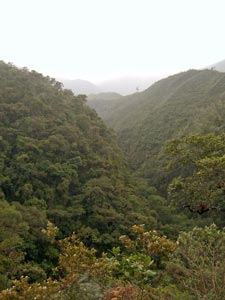 Steep cloud-forest filled valley |
|
||
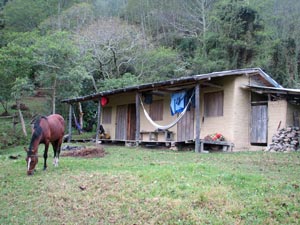 Niño in front of Refugio Solomaco |
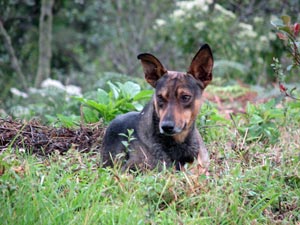 Boomer has a rest |
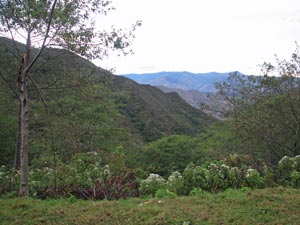 View from Refugio Solomaco |
|
An hour or so after lunch, the rain had cleared sufficiently to head out again. Sergio wanted to show me a hidden canyon and waterfall further up the Solamaco. We descended rapidly via a steep "machete-track", beneath the tall cloud-forest trees, covered in bromeliads, ferns, lichens and the odd orchid, which shared the forest with tall tree-ferns, giant bamboos, figs, palms, lianas and the iconic podocarpus. |
|
|
|
|
||
|
|||
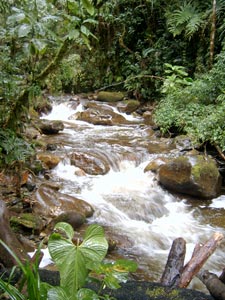 Rio Solomaco |
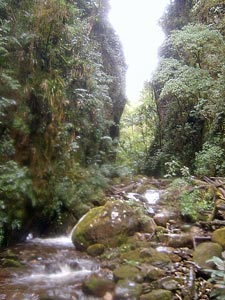 Entering a narrow gorge of the Solomaco |
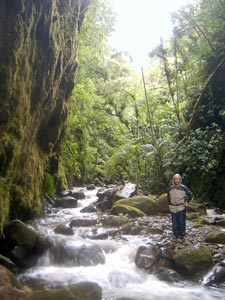 Wading up through the Solomaco Gorge |
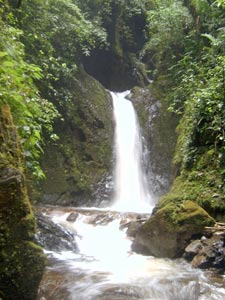 Cascades at the head of the gorge |
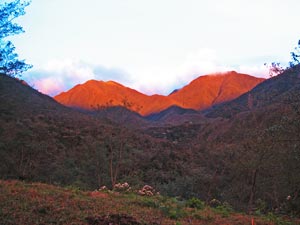 The sun finally appears on the tops of the Andes ... |
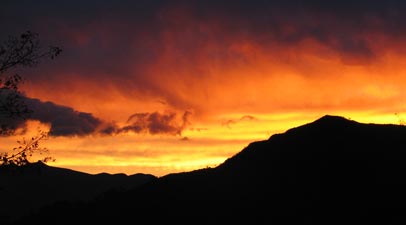 ... before lighting up the sky .... |
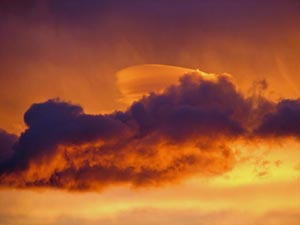 ... in a fiery orange sunset |
|
||
|
|
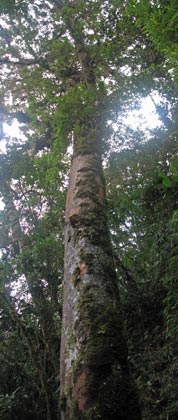 Looking up a 300-year old podocarpus |
||
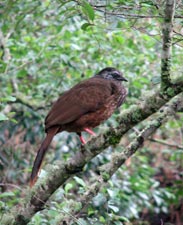 Bearded guan (Penelope barbatus) |
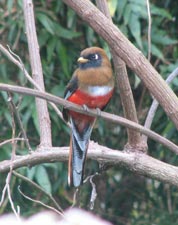 Quetzal |
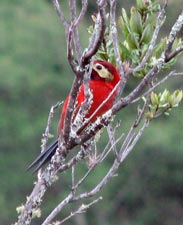 |
|
|
|||
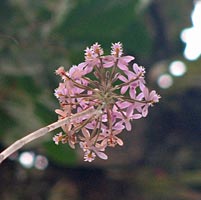 |
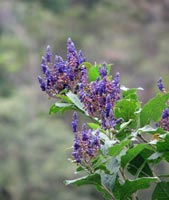 |
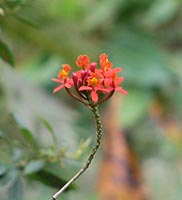 |
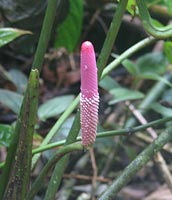 |
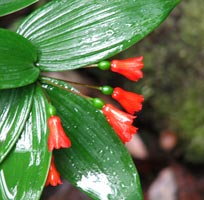 |
|
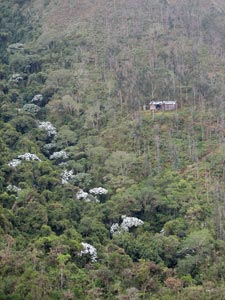 Sharp ecotone in the cloud forest |
|
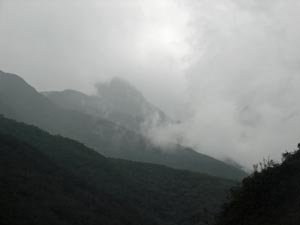 Mists obscuring the peaks of Podocarpus National Park |
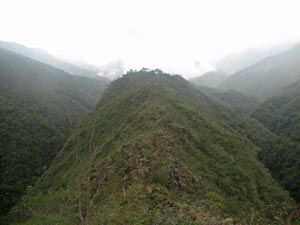 The ridge up to Las Palmas |
|
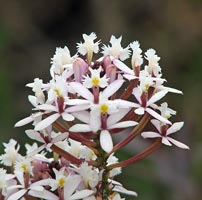 |
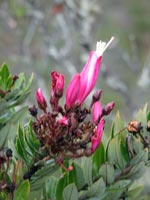 |
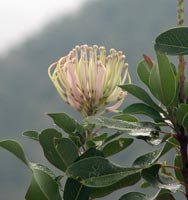 |
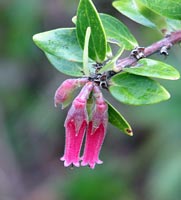 |
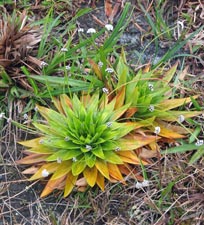 |
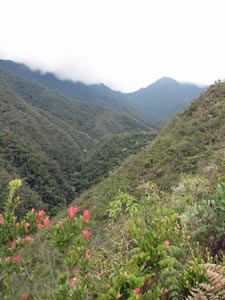 Looking up towards the mountain tops |
|
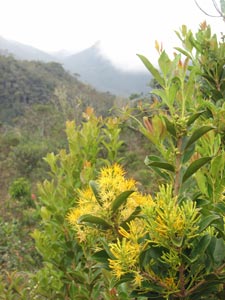 The ridge was covered with flowering shrubs |
|
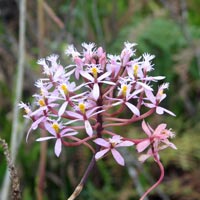 One of many orchids |
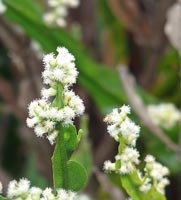 "La Mano de Dios" |
||
|
|
||
|
|
|
|
We retraced our steps 150m back up to the plateau and ate our lunch on the verandah of Refugio Las Palmas (at 2460m the highest point of the trek) as the cloud drifted around the top of the ranges behind us. Then it was time to head back, down to the river and back up to the long traverse and ridge that we had climbed the day before, towards the distant sunlight that shone over the Vilcabamba Valley.
|
|||
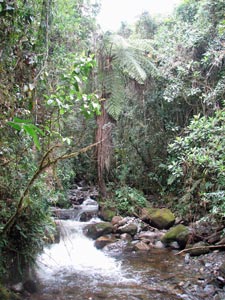 Last look at Quebrada Solomaco |
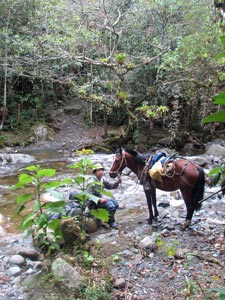 Sergio and Niño at the river crossing |
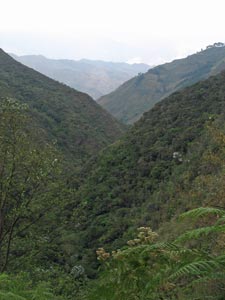 The path out of the cloud forest |
|
|
|||
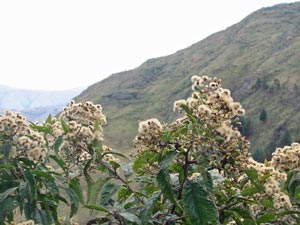 ---------- ----------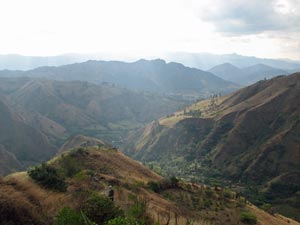 Flora and transformed landscapes to the west of Vilcabamba |
|||
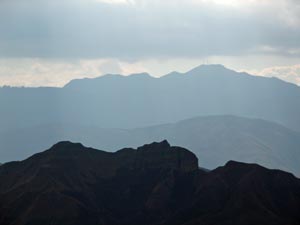 Silhouette of the reclining stone face of Mandango |
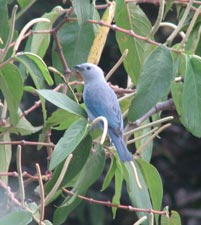 |
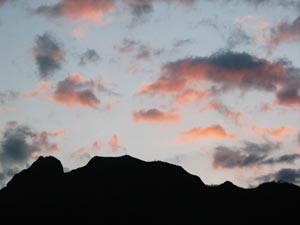 Sunset over Vilcabamba |
|
||